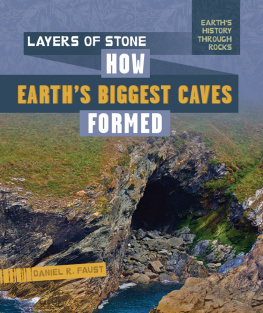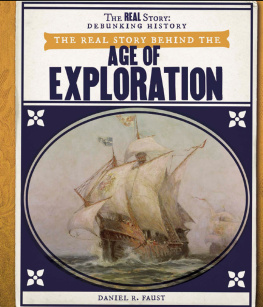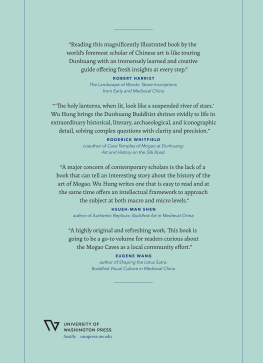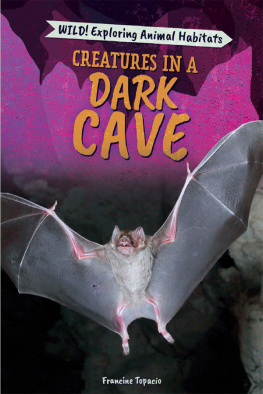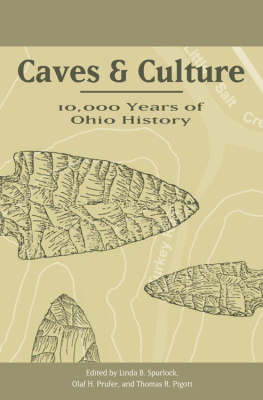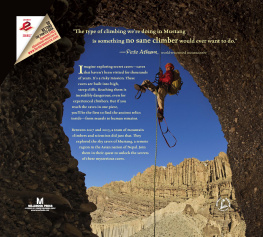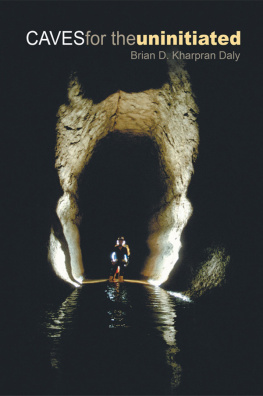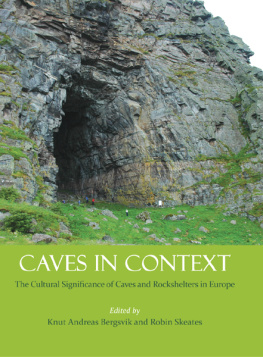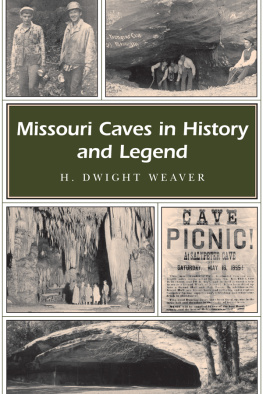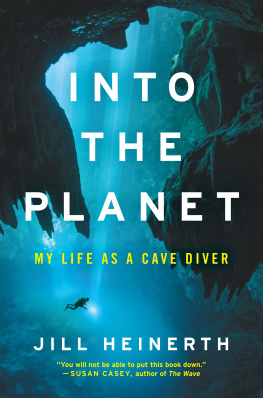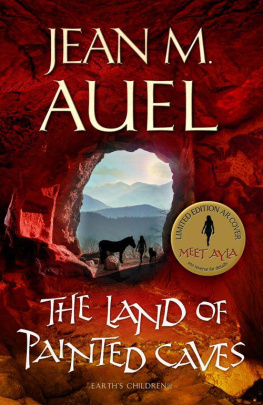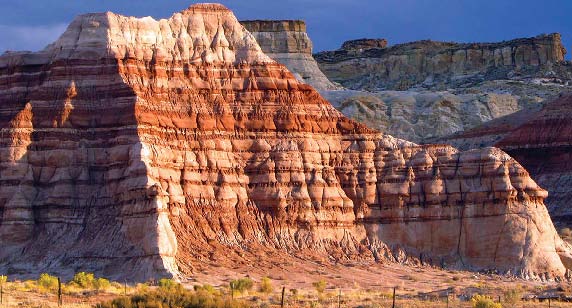Published in 2020 by The Rosen Publishing Group, Inc. 29 East 21st Street, New York, NY 10010
Copyright 2020 by The Rosen Publishing Group, Inc.
All rights reserved. No part of this book may be reproduced in any form without permission in writing from the publisher, except by a reviewer.
First Edition
Editor: Sarah Machajewski
Book Design: Tanya Dellaccio
Photo Credits: Cover Boon Tang/500px Prime/Getty Images; p. 5 Anirut Thailand/Shutterstock.com; p. 7 (top) Webspark/Shutterstock.com; p. 7 (bottom) Leene/Shutterstock.com; p. 9 3xy/Shutterstock.com; p. 11 Amineah/Shutterstock.com; p. 13 (top) Wangkun Jia/Shutterstock.com; pp. 13 (bottom), 25 Vietnam Stock Images/Shutterstock.com; p. 14 annie_zhak/Shutterstock.com; p. 15 FCG/Shutterstock.com; p. 17 Lucia Terui/Moment/Getty Images; p. 18 Ralf Lehmann/Shutterstock.com; p. 19 Robin Runck/Shutterstock. com; p. 21 J. Helgason/Shutterstock.com; p. 22 Armando Frazao/Shutterstock.com; p. 23 MATJAZ SLANIC/E+/Getty Images; p. 27 Marco Barone/Shutterstock.com; p. 29 Xinhua News Agency/Getty Images; p. 30 Piotr Krzeslak/Shutterstock.com.
Library of Congress Cataloging-in-Publication Data
Names: Faust, Daniel R., author.
Title: Layers of stone : how Earths biggest caves formed / Daniel R. Faust. Description: New York : PowerKids Press, [2020] | Series: Earths history through rocks | Includes index.
Identifiers: LCCN 2018053246| ISBN 9781725301528 (pbk.) | ISBN 9781725301542 (library bound) | ISBN 9781725301535 (6 pack)
Subjects: LCSH: Caves--Juvenile literature. | Speleology--Juvenile literature. | Geology, Structural--Juvenile literature. | Landforms--Juvenile literature.
Classification: LCC GB601.2 .F3855 2020 | DDC 551.44/7--dc23
LC record available at https://lccn.loc.gov/2018053246
Manufactured in the United States of America
CPSIA Compliance Information: Batch #CSPK19. For Further Information contact Rosen Publishing, New York, New York at 1-800-237-9932.
NOT JUST SOME HOLE IN THE GROUND
When youre walking down the street or hanging out with your friends at the park, you probably think youre standing on solid ground. The ground beneath your feet feels pretty firm, doesnt it? It might surprise you to learn that the ground is full of holes.
Many of these holes are man-made. There are holes in the ground that contain pipes that carry water to and from our homes. Others hold cables and wires that deliver electricity and other services. Some holes are made by the natural processes of the earth. These holes are called caves. Caves are large, hollow places that have been carved into rock by wind, water, and other forces.
CAVE OR CAVERN?
Sometimes people think they can use the words cave and cavern to describe the same thing, but theres a difference. A cave is any opening in the ground large enough that part of it isnt exposed to direct sunlight. A cavern is a type of cave thats formed when water soaks into the ground and affects a specific type of rock.
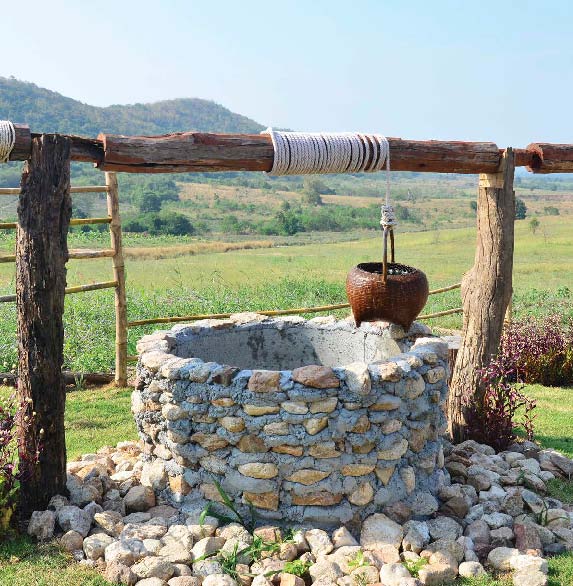
A well is a kind of man-made hole. People dig wells deep into the ground to provide communities with clean drinking water.
LAYERS EVERYWHERE
Earth has four main layers. At the center of the planet is the inner core, which is a mass of solid iron and nickel. Around the inner core is a layer of hot liquid metal known as the outer core. The core layers are surrounded by a shell of solid and semisolid rock called the mantle. The outermost layer of the earth is called the crust. The crust includes everything we see on the surface of the planet, such as ocean beds and mountains.
In addition to the four layers that make up Earth, the crust itself is made of different layers. These layers, or strata, are made of different kinds of rock, soil, and minerals. The different layers that make up the crust are where caves form.
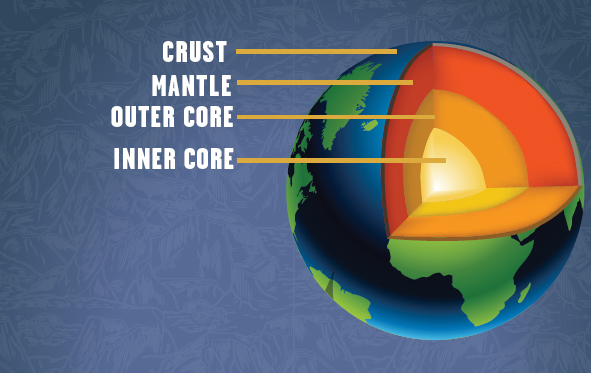
Each band of color in this rock formation represents a different kind of substance. Scientists study the strata found in rocks to learn about Earths past.
READING THE ROCKS
EARTHSLITHOSPHERE, WHICH INCLUDES THE CRUSTAND PART OF THE UPPER MANTLE, IS BROKEN INTO LARGE PIECES CALLED TECTONIC PLATES. THE MOVEMENT OF THESE PLATES CREATES MOUNTAINS AND CAUSES VOLCANOES AND EARTHQUAKES.
WATER ON THE ROCKS
Lets take a closer look at the processes that form caves. Caves can be formed by chemical reactions and physical reactions. However theyre formed, water is a key part of the process.
The water cycle is the ongoing movement of water on, above, and beneath the surface of the earth. Water changes as it moves through different phases, or stages. Water evaporates from Earths surface and rises as water vapor. It cools in the clouds, turning back into liquid water. This water returns to the surface in the form of precipitation such as rain or snow. Water that doesnt flow back into the worlds oceans, rivers, and lakes soaks into the ground. The water seeps in and interacts with the soil and stone that make up Earths surface.
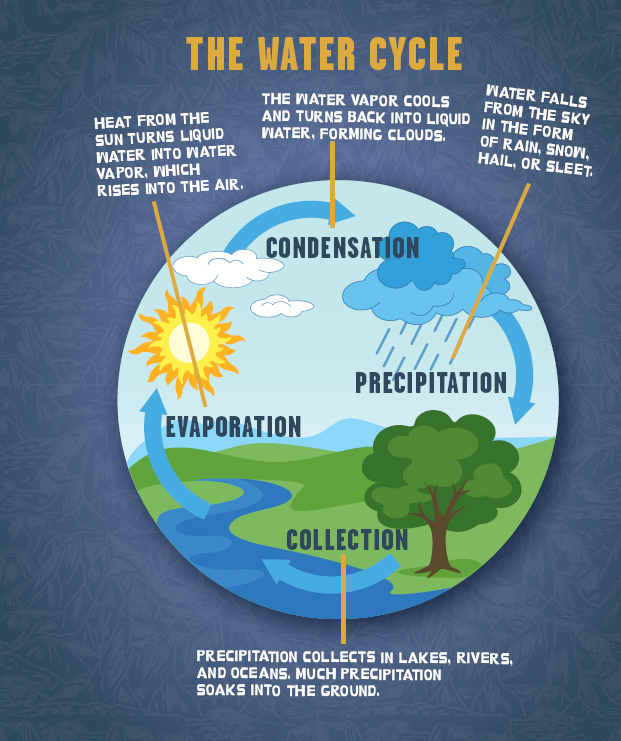
We might not be able to see all the phases of the water cycle, but the process is going on all around us.
As water falls to Earth, it can pick up contaminants from air pollution, which can change how water reacts with certain kinds of rock. The water in rivers and other waterways can wear away at rock and stone to create valleys and canyons, such as the Grand Canyon. The movement of the oceans creates and changes the shape of the coastlines.
Water that seeps into the ground can also change the shape of Earths landscapes. This water creates caves. Just like the way rivers and oceans can erode rock and stone on Earths surface, water can dissolve certain kinds of substances found inside the earth. When the water level recedes, it leaves behind hollow chambers in the solid stone.
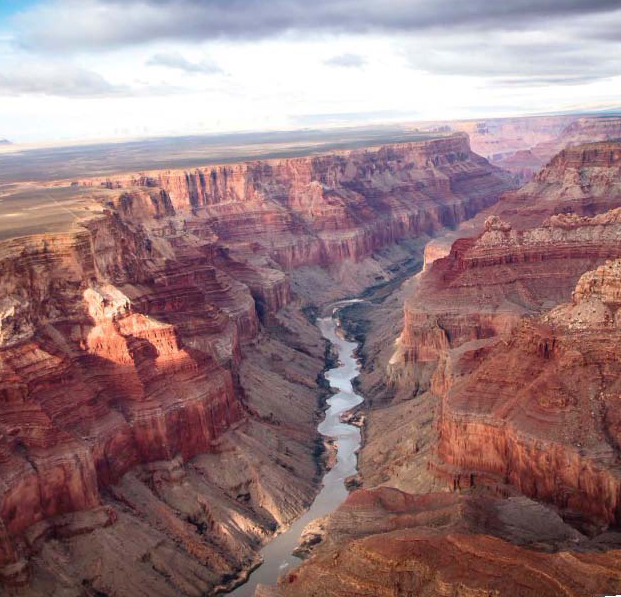
The Grand Canyon is just one example of the effect moving water can have on Earths surface. This natural wonder was created by millions of years of erosion by the Colorado River.
You may be lucky enough to live in an area where there are caves to explore, but these caves are probably not that big. However, there are some truly massive caves around the world. In Vietnam, a drop of more than 200 feet (61 m) takes explorers into the Son Doong Cave, which is over 5.5 miles (8.9 km) long.
Mulu Caves on the island of Borneo are home to the largest cave chamber. This chamber is longer than 2,000 feet (609.6 m) and more than 260 feet (79.3 m)high. Thats large enough to hold 40 airplanes! The SistemaSac Actun in Mexico is the second-longest underwater cave system in the world. Only 130 miles (209.2 km) of it have been explored. The cave is a popular destination for snorkelers and scuba divers.

